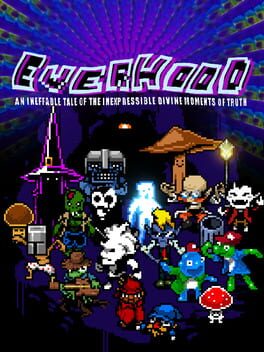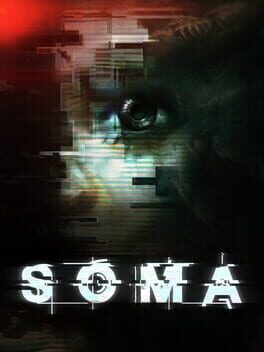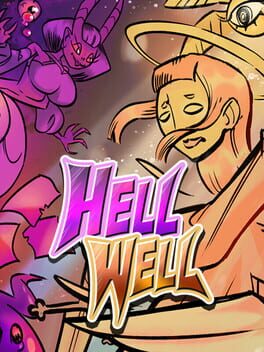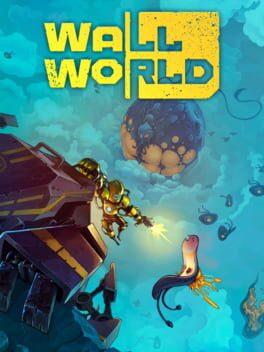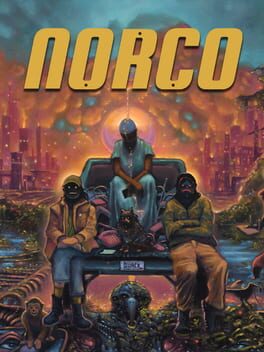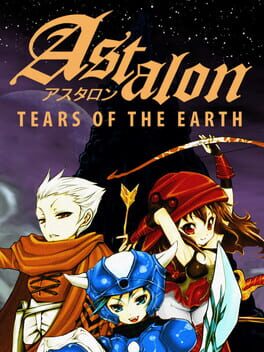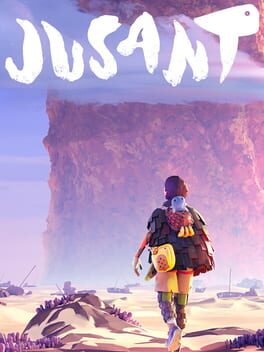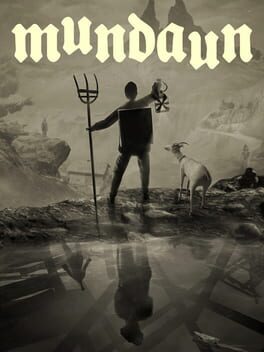Giulianosse
2021
I wish people quit comparing Everhood to Undertale. While they share similarities, they're almost nothing alike. It was precisely what made me drop the game a few years ago - I had just played Undertale and got disappointed at Everhood's "lesser" experience and apparently plagiarized style.
Now, after a few years, I finally decided to give it a second chance and, I dare to say, it's actually superior to Undertale in some aspects. So much it deserves to be analyzed as its own thing.
To begin: I loved how Everhood already establishes its intention of breaking the 4th wall right as you click "start". Without spoiling much, it's sublime how the game employs storytelling and the nature of its medium to actively challenge us - the player - both physically and, surprisingly enough, psychologically as well.
It's been a while since an interactive work has made me so thoughtful about my decisions. I'd be lying if I didn't get teary eyed during some revelations and phisophical arguments: it invites us to think about our conceptions of mortality and eternity, wrapped in a tight layer of Buddhism. And it's absolutely dripping in metaphorical beauty, if you're up to engage the game's messages in its intended higher art domain, not constrained by the physical boundaries of your direct videogame experience.
On the surface, though - and I'm not dismissing it at all by saying that - Everhood features a cast of likeable characters, fun and inventive rhythm battles (which twists and bends its genre conventions at every opportunity it gets) coated in a thick varnish of the famous "Undertale humor".
Speaking of Undertale, the only comparison I'm willing to make in regards to Everhood - beside it's humor and sometimes absurdist comedy style - is that the latter cleverly rolls both Undertale's New Game and New Game+ experience into a single coherent package. Which to me is a big plus.
Differently from the aforementioned, though, I think Everhood's lessons and truths changed me (or, in better words, instigated me to change) into a better person. It's an experience I'll carry on and keep thinking about for quite some time - and I'm grateful about it.
Now, after a few years, I finally decided to give it a second chance and, I dare to say, it's actually superior to Undertale in some aspects. So much it deserves to be analyzed as its own thing.
To begin: I loved how Everhood already establishes its intention of breaking the 4th wall right as you click "start". Without spoiling much, it's sublime how the game employs storytelling and the nature of its medium to actively challenge us - the player - both physically and, surprisingly enough, psychologically as well.
It's been a while since an interactive work has made me so thoughtful about my decisions. I'd be lying if I didn't get teary eyed during some revelations and phisophical arguments: it invites us to think about our conceptions of mortality and eternity, wrapped in a tight layer of Buddhism. And it's absolutely dripping in metaphorical beauty, if you're up to engage the game's messages in its intended higher art domain, not constrained by the physical boundaries of your direct videogame experience.
On the surface, though - and I'm not dismissing it at all by saying that - Everhood features a cast of likeable characters, fun and inventive rhythm battles (which twists and bends its genre conventions at every opportunity it gets) coated in a thick varnish of the famous "Undertale humor".
Speaking of Undertale, the only comparison I'm willing to make in regards to Everhood - beside it's humor and sometimes absurdist comedy style - is that the latter cleverly rolls both Undertale's New Game and New Game+ experience into a single coherent package. Which to me is a big plus.
Differently from the aforementioned, though, I think Everhood's lessons and truths changed me (or, in better words, instigated me to change) into a better person. It's an experience I'll carry on and keep thinking about for quite some time - and I'm grateful about it.
2024
If you crave anything analog horror like Local58 or Gemni Home Entertainment, you'll love Home Safety Hotline. It starts with you picking up calls about a deceptively mundane collection of household critters and issues we're used to, but as each day passes you get introduced to the more occult, creepy, otherworldly, folklorical and sometimes whimsical "pests" that could potentially inhabit our home.
I, however would have loved an even bigger collection of creatures and phenomena to identify. As the game approaches its last day (disappointingly quickly, keep in mind), I'm left with a feeling of wanting more, especially since most of the entries are only featured once in calls and some of them are very straightforward.
The best calls are undoubtedly those where you're wondering if the customer is being plagued by an eldritch metamorphic being, a neat freak fairy that hides in your drain... or just a frozen pipe.
I can see where the dev was going with the ending, but the last riddles "puzzle" was just... terrible, both thematically and from a gameplay perspective.
I, however would have loved an even bigger collection of creatures and phenomena to identify. As the game approaches its last day (disappointingly quickly, keep in mind), I'm left with a feeling of wanting more, especially since most of the entries are only featured once in calls and some of them are very straightforward.
The best calls are undoubtedly those where you're wondering if the customer is being plagued by an eldritch metamorphic being, a neat freak fairy that hides in your drain... or just a frozen pipe.
I can see where the dev was going with the ending, but the last riddles "puzzle" was just... terrible, both thematically and from a gameplay perspective.
2015
Absolutely brainteaser of a narrative that prodded me to question myself, my concepts of consciousness and gave me mild existential crisis at some points. It was the first game in which I needed to take a minute to actually consider the implications of a decision.
The atmosphere is perfect and a big positive if you're a fan of biomechanical horror. The expertly crafted environmental storytelling elements make learning about SOMA's plot a very enjoyable and fluid experience in what may be Frictional's best game in this department so far.
Curiously enough, it also has one of the worst gameplays of Frictional's titles. The monsters operate under very articifical and game-y conditions (the exploration is broken by clearly telegraphed "run and hide" sections and the creatures themselves follow a very on rails behavior).
I actually recommend playing SOMA on the alternate difficulty mode where monsters can't kill you, so you can appreciate the story at your own pace and read all the logs without feeling rushed.
The atmosphere is perfect and a big positive if you're a fan of biomechanical horror. The expertly crafted environmental storytelling elements make learning about SOMA's plot a very enjoyable and fluid experience in what may be Frictional's best game in this department so far.
Curiously enough, it also has one of the worst gameplays of Frictional's titles. The monsters operate under very articifical and game-y conditions (the exploration is broken by clearly telegraphed "run and hide" sections and the creatures themselves follow a very on rails behavior).
I actually recommend playing SOMA on the alternate difficulty mode where monsters can't kill you, so you can appreciate the story at your own pace and read all the logs without feeling rushed.
2022
William, your character, is unable to express himself. So the player has to help him move his facial muscles. This system is what dictates Who's Lila choice-based "social horror" gameplay. You steer the conversation and outcomes depending on your face.
However, that is surprisingly the least weird part of this 1 bit point and click mystery. The game itself is quite short, so you'll replay it a few times for different endings. But, without spoiling, at one point things get... very meta, and you'll have to interact with stuff outside the game to progress. Kinda like an ARG.
And this is where Who's Lila becomes absolute bonkers. It barrages you with Jungian psychology, concepts related to the archetype of ideas and ideals, Ego, qualia, consciousness, the notion of agency, personhood, the occult and esoteric. The elusive implications of its concepts defy rational though and gave me a harrowing feeling of existential dread.
Unfortunately, this game is impossible to complete without a guide because while most of the endings are relatively straightforward, others can be missed by not making just a single, unrelated and arbitrary choice early in the run. You'll have to tediously replay through lengthy sections just to attempt a different outcome.
That's the only thing preventing me from considering this game a straight masterpiece. Still, it's wonderfully unique in a conceptual sense and has some of the most insane narrative I've seen in recent years. I couldn't help but sit in wonder after wrapping up the true ending and beholding the final trick, most vile of them all.
However, that is surprisingly the least weird part of this 1 bit point and click mystery. The game itself is quite short, so you'll replay it a few times for different endings. But, without spoiling, at one point things get... very meta, and you'll have to interact with stuff outside the game to progress. Kinda like an ARG.
And this is where Who's Lila becomes absolute bonkers. It barrages you with Jungian psychology, concepts related to the archetype of ideas and ideals, Ego, qualia, consciousness, the notion of agency, personhood, the occult and esoteric. The elusive implications of its concepts defy rational though and gave me a harrowing feeling of existential dread.
Unfortunately, this game is impossible to complete without a guide because while most of the endings are relatively straightforward, others can be missed by not making just a single, unrelated and arbitrary choice early in the run. You'll have to tediously replay through lengthy sections just to attempt a different outcome.
That's the only thing preventing me from considering this game a straight masterpiece. Still, it's wonderfully unique in a conceptual sense and has some of the most insane narrative I've seen in recent years. I couldn't help but sit in wonder after wrapping up the true ending and beholding the final trick, most vile of them all.
2023
Hell Well is a retro themed mix of top down action and tower defense game. Don't expect much of this game - it's $5 after all.
Given that, I liked the 4-tone pixel art graphics - especially given how your enemies are "biblically accurate angels" - and its colorful palette options. Figuring out the best strategy and "demon" positioning is fun for a while - you can combo some upgrades to increase your stats - and can even turn your run into a Vampire Survivors-esque screen cacophony when you unlock endless mode after beating the final boss!
With more polish and content (towers, attacks, skills, nemy variety and levels with different layouts/art), Hell Well could've easily aimed higher. Still, I had my fair share of fun with this small little game.
Given that, I liked the 4-tone pixel art graphics - especially given how your enemies are "biblically accurate angels" - and its colorful palette options. Figuring out the best strategy and "demon" positioning is fun for a while - you can combo some upgrades to increase your stats - and can even turn your run into a Vampire Survivors-esque screen cacophony when you unlock endless mode after beating the final boss!
With more polish and content (towers, attacks, skills, nemy variety and levels with different layouts/art), Hell Well could've easily aimed higher. Still, I had my fair share of fun with this small little game.
2023
On first glance, you might think this is basically Dome Keeper, but vertical instead of horizontal. As a fan of the first game, I'd go as far as saying Wall World does some stuff even better than the game it was inspired on.
First off: there's a permanent progression system with upgrades that carry over your runs. They're surprisingly deep and varied. You find them scattered around the mines and use bits you earn from breaking blocks. It's fun to start weak and see you surviving more in each subsequent run. In the end, you're basically clearing mines in seconds.
Then there's also different guns and equipment for you to choose and upgrade. While there isn't too much enemy variety, they do a good job of keeping you on your toes. The ending is a bit underwhelming and you feel as if there could be more content overall (biomes, for example).
Beware: Wall World is one of those titles I like to call "gaming crack". Extremely addictive and grindy in a good way. Control scheme is a little wonky on console, but that's more of a porting issue than a dev oversight.
First off: there's a permanent progression system with upgrades that carry over your runs. They're surprisingly deep and varied. You find them scattered around the mines and use bits you earn from breaking blocks. It's fun to start weak and see you surviving more in each subsequent run. In the end, you're basically clearing mines in seconds.
Then there's also different guns and equipment for you to choose and upgrade. While there isn't too much enemy variety, they do a good job of keeping you on your toes. The ending is a bit underwhelming and you feel as if there could be more content overall (biomes, for example).
Beware: Wall World is one of those titles I like to call "gaming crack". Extremely addictive and grindy in a good way. Control scheme is a little wonky on console, but that's more of a porting issue than a dev oversight.
2022
NORCO is a tricky one. It simultaneously has some of the best ambiance in point and click games to date - its southern gothic industrial-core setting managed to make me nostalgic for something I never lived through (I tentatively put it alongside Kentucky Route Zero in this regard) - and a mind bending story about faith, religion, capitalism and coming to terms with oneself that's part beautiful, part cathartic and part harrowing.
It also has some of the most questionable gameplay decisions I've seen in games of this genre, mainly the combat sections which are completely unnecessary and inconsequential, and some basic point and click "going back and forth" to pad out for more content. Sure, some of it helps you get even more immersed into the game, but the morsels of lore you gather along the way sometimes don't pay off the filler (I'm looking at you, city hall elevator puzzle).
The game is wonderful, but would've been better if it was just a straightforward point & click interactive novel.
Great humor, great ambiance, gorgeous pixel are visuals and a great story that will fry your brain during its last act, whose themes will surely stay in my thoughts for quite some time.
It also has some of the most questionable gameplay decisions I've seen in games of this genre, mainly the combat sections which are completely unnecessary and inconsequential, and some basic point and click "going back and forth" to pad out for more content. Sure, some of it helps you get even more immersed into the game, but the morsels of lore you gather along the way sometimes don't pay off the filler (I'm looking at you, city hall elevator puzzle).
The game is wonderful, but would've been better if it was just a straightforward point & click interactive novel.
Great humor, great ambiance, gorgeous pixel are visuals and a great story that will fry your brain during its last act, whose themes will surely stay in my thoughts for quite some time.
Fact: Castlevania: Symphony of the Night is one of my favorite games ever. Ever since I exhaustively completed it in every way possible during my formative years, I've been aimlessly looking for a true successor. A few games got close, but ultimately were missing something I couldn't put my finger on. Astalon is the closest game to scratch that itch so far.
It's more of a "metroid" than "vania" game, and it shares some similarities with the Igavania sub-subgenre. It doesn't feature the complexity or sheer number of gameplay systems as SOTN, but it absolutely nails the exploration aspect - you're always finding new shortcuts, secret rooms and new abilities to help you traverse the map and reach previously inaccessible spots.
One of its core mechanics is that everytime you die, you get sent back to the first room in the game (albeit with all your upgrades, items and map progress carried over). It's a testament to how well connected the tower is, because you're almost always able to find yourself back at your previous death spot with very little effort.
Unfortunately, this can sometimes lead to some repetitive bouts, especially during the latter harder (and cartographically isolated) sections of the game. Still, the game is never unfair with the player and greatly rewards pattern learning, memory and exploration.
It's more of a "metroid" than "vania" game, and it shares some similarities with the Igavania sub-subgenre. It doesn't feature the complexity or sheer number of gameplay systems as SOTN, but it absolutely nails the exploration aspect - you're always finding new shortcuts, secret rooms and new abilities to help you traverse the map and reach previously inaccessible spots.
One of its core mechanics is that everytime you die, you get sent back to the first room in the game (albeit with all your upgrades, items and map progress carried over). It's a testament to how well connected the tower is, because you're almost always able to find yourself back at your previous death spot with very little effort.
Unfortunately, this can sometimes lead to some repetitive bouts, especially during the latter harder (and cartographically isolated) sections of the game. Still, the game is never unfair with the player and greatly rewards pattern learning, memory and exploration.
2023
A gorgeous game with an extremely inventive and original climbing gameplay system oddly reminiscent of Death Stranding, where each trigger controls the grip on your respective hands. Interestingly enough, the game actually manages to make you physically tired by having to control your character, something I assume was intentional but adds to the experience.
The best way I could describe Jusant is: if Team Ico decided to make an indie game.
The story is told entirely through text logs and environmental details - it's completely dialogueless. Yet it's enticing - and emotional - enough to push you forward till the end. It wasn't until the credits rolled that I finally understood what it was all about.
The game's short enough to not overstay its welcome, but my score would definitely be a little higher if not for the cave chapter, which I felt was a step down both mechanically and thematically from the previous and subsequent chapters.
The best way I could describe Jusant is: if Team Ico decided to make an indie game.
The story is told entirely through text logs and environmental details - it's completely dialogueless. Yet it's enticing - and emotional - enough to push you forward till the end. It wasn't until the credits rolled that I finally understood what it was all about.
The game's short enough to not overstay its welcome, but my score would definitely be a little higher if not for the cave chapter, which I felt was a step down both mechanically and thematically from the previous and subsequent chapters.
2021
Mundaun's masterfully crafted atmosphere sets the perfect tone for its horror story, which has you investigating the sudden death of your grandfather in a provincial Italian village during the 1920's after being visited by someone you can only assume is the Devil himself.
The visuals are oddly reminiscent of a painting - its sepia tones and washed out textures are gorgeously realized. The best way I could describe Mundaun's overall tone is "The Seventh Seal if it were a videogame".
While the game excels in the story and setting department, it falls a bit flat on the gameplay. The diegetic inventory, diary and interactive systems (such as boiling coffee, turning individual parts of your hay cart on and off etc) are a welcome change of pace, but they're excessively janky and could use a little more variety - especially regarding enemies and combat. It starts to really get repetitive during its latter half.
The visuals are oddly reminiscent of a painting - its sepia tones and washed out textures are gorgeously realized. The best way I could describe Mundaun's overall tone is "The Seventh Seal if it were a videogame".
While the game excels in the story and setting department, it falls a bit flat on the gameplay. The diegetic inventory, diary and interactive systems (such as boiling coffee, turning individual parts of your hay cart on and off etc) are a welcome change of pace, but they're excessively janky and could use a little more variety - especially regarding enemies and combat. It starts to really get repetitive during its latter half.
